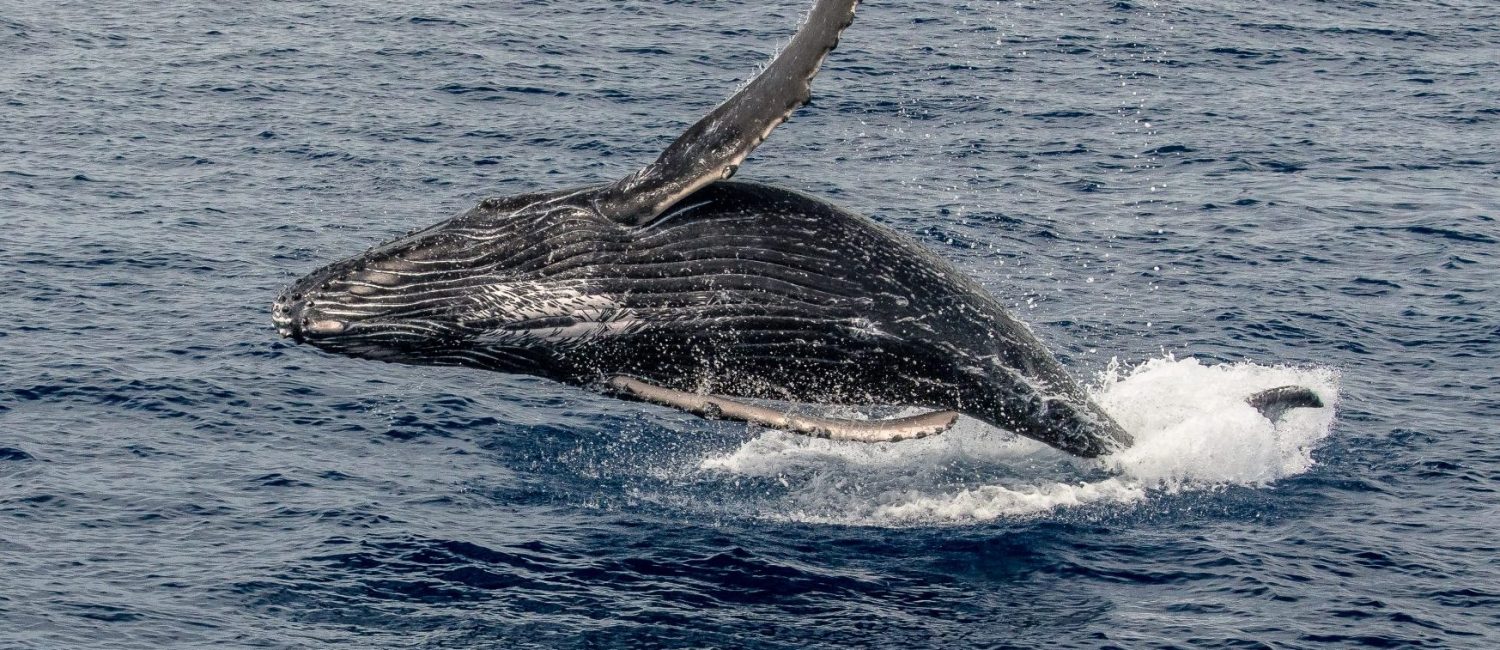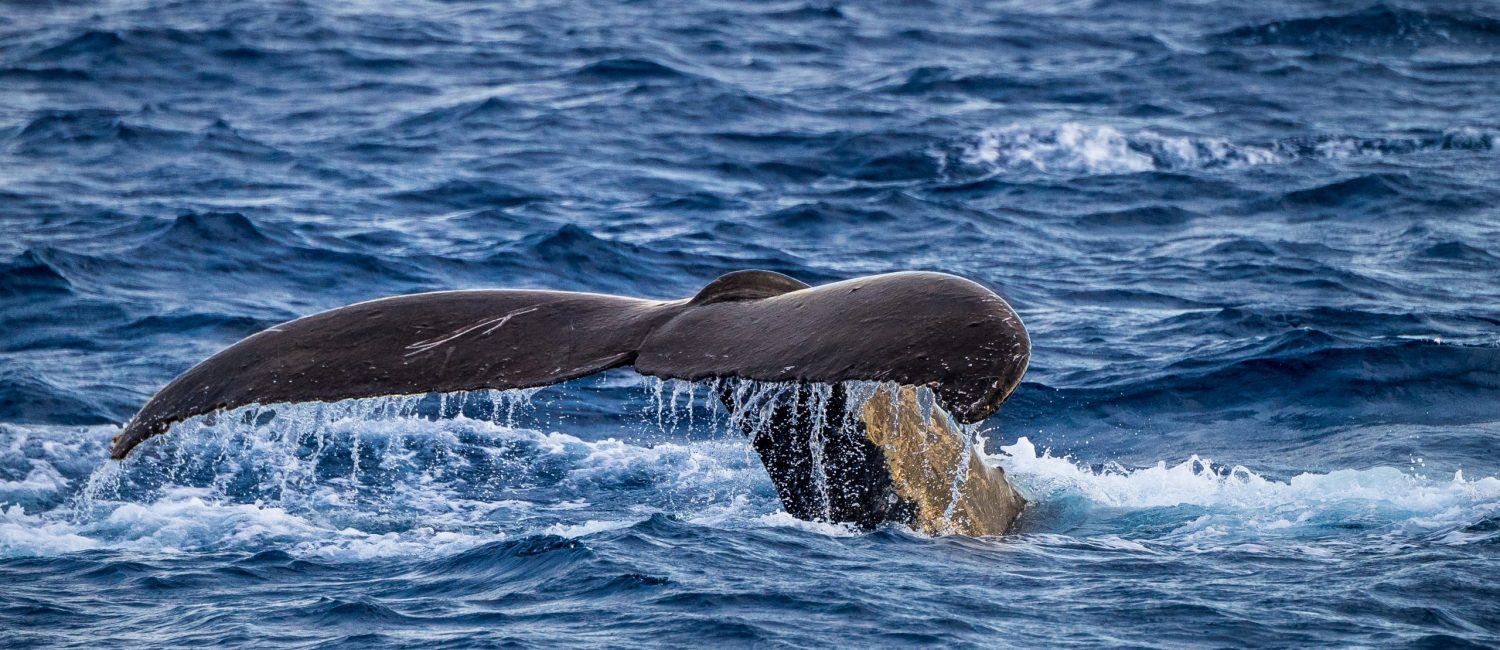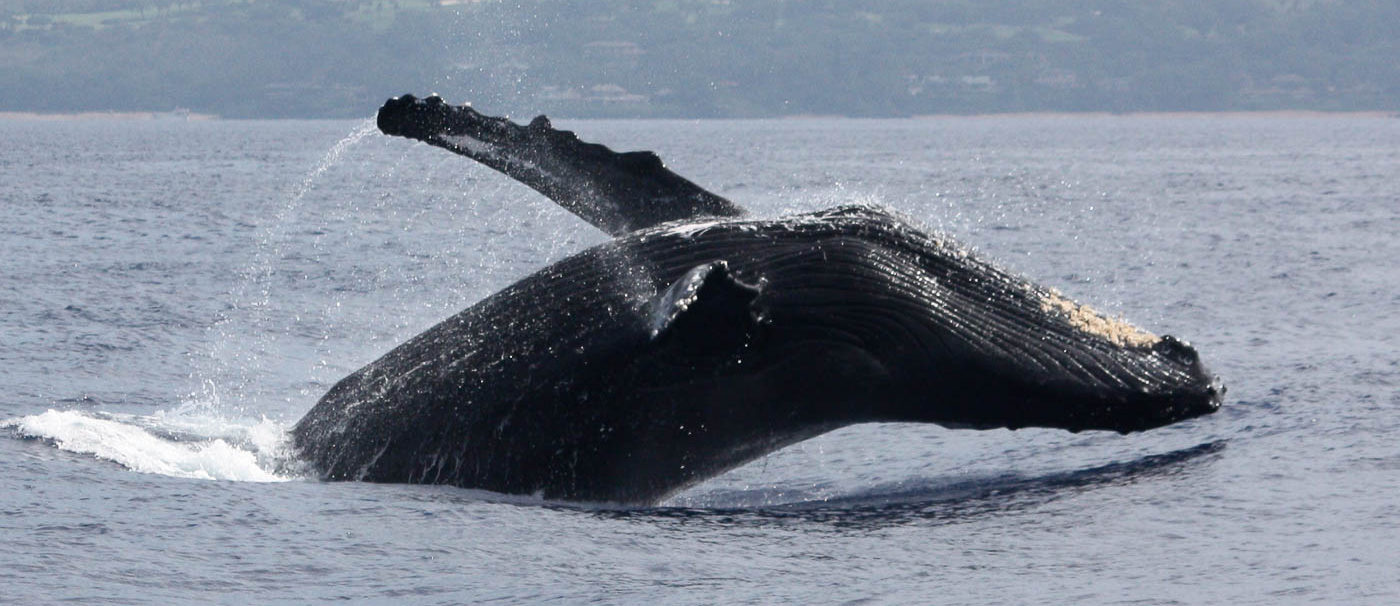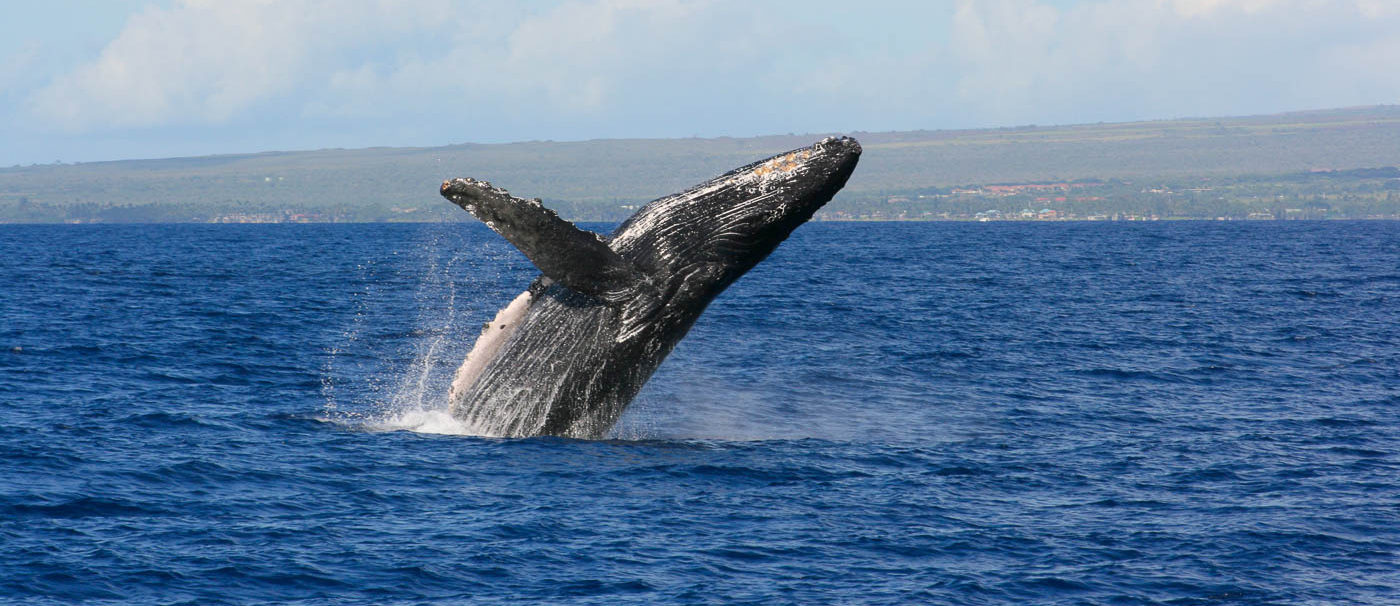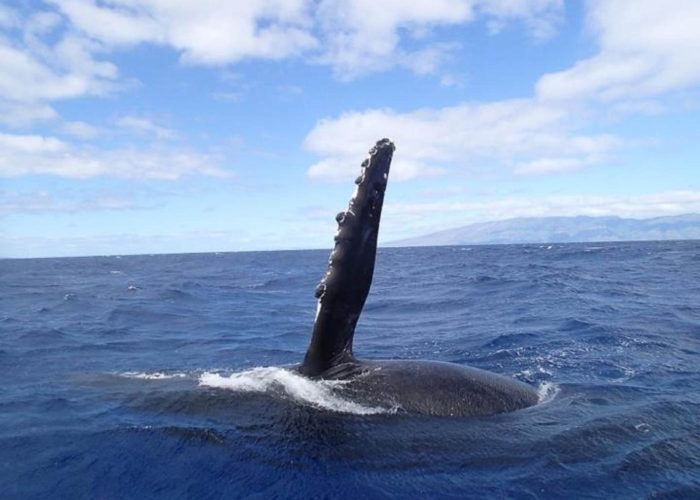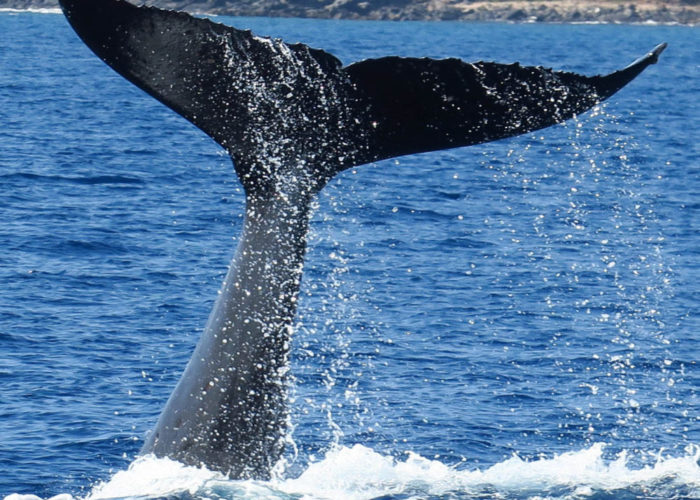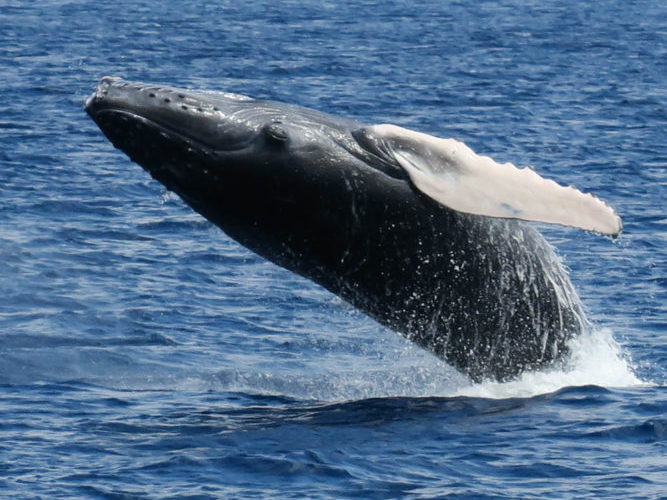Maui’s Humpback Whales
Join us during whale season and combine snorkeling along with Humpback whale watching. View them in their environment onboard the Maui Magic Snorkel Adventure, watch them as they perform amazing acrobatics, and hear them in the water while you snorkel. You will see them in ways like never before, making for a personal experience that you will never forget.
Humpback whales perform their annual migration to Maui’s coastal waters as they come here to calve, mate, and rear their young, normally between the months of December and March. This is our favorite time of the year! With a large concentration of whales in one specific area, we get the opportunity on board the Maui Magic to see and interact with them daily during seasonal months.
Over the years, we have had some amazing experiences and encounters with these beautiful creatures. View the whales in action in all their graceful aerobatics, breaches, tail slaps, spy hopping, and more!
Humpback whales (Megaptera novaeangliae) are the gentle giants of the sea and can weigh up to 40 tons! Humpback whales are omnivores and consume cod, krill, anchovies, sardines, mackerel, capelin, and other schools of fish.
Blow
Usually the first indication that whales are nearby is by their blow, which is how the humpbacks exhale air. The vaporized water that they displace when exhaling shoots 20 to 25 feet up into the air. On average, the mature humpbacks come to the surface to breathe every 10 to 15 minutes, but they can remain underwater for as long as 45 minutes. When near the surface of the water, the whales will generally take 3 to 6 breaths before diving deeper into the water. The juveniles, called calves, need to rise to the surface every 3 to 5 minutes.
Breaching
A whale breach is an acrobatic display where the humpback uses its tail flukes to launch itself out of the water and then lands back onto the surface of the water, creating quite a splash!
Tail Slap
A tail slap consists of a whale raising its tail flukes out of the water and slapping them forcefully on the waters surface, resulting in a tremendous splash that can be heard both above and below water. Humpback whales are known to keep repeating this behavior over and over.
Pectoral Slap
The whale will slap the surface of the water with either one or both fins at the same time. The humpback has the longest pectoral fins in ratio to their body size of all the whales. While on the surface, the humpbacks will sometimes lay on their sides, lift their pectoral fins into the air and then slap them down on the water, creating a loud smack.
Head Rise or Spy Hop
This is truly a sight to behold. The whale will rise vertically up towards the surface, with its head almost completely out of the water. This maneuver allows the humpback to view activity happening above water and on the surface.
Fluke Up Dive
The ‘fluke up dive’ is usually a signal that the whale is departing and diving deep. The humpback arches its massive tail flukes up into the air, which gently propels it into deeper water.
Pods
The most common pod size we see here in the islands is between 2 and 3 whales. The next most frequent sighting is that of a single whale, also called a “singleton”, which is usually a lone male. Sometimes pods of 4 to 8 whales will be encountered and only rarely, pods of 20 or more. It is thought that the size of the pod has a lot to do with the activity of the whales, such as swimming, playing, weaning, courting, nursing, mating or fighting.

